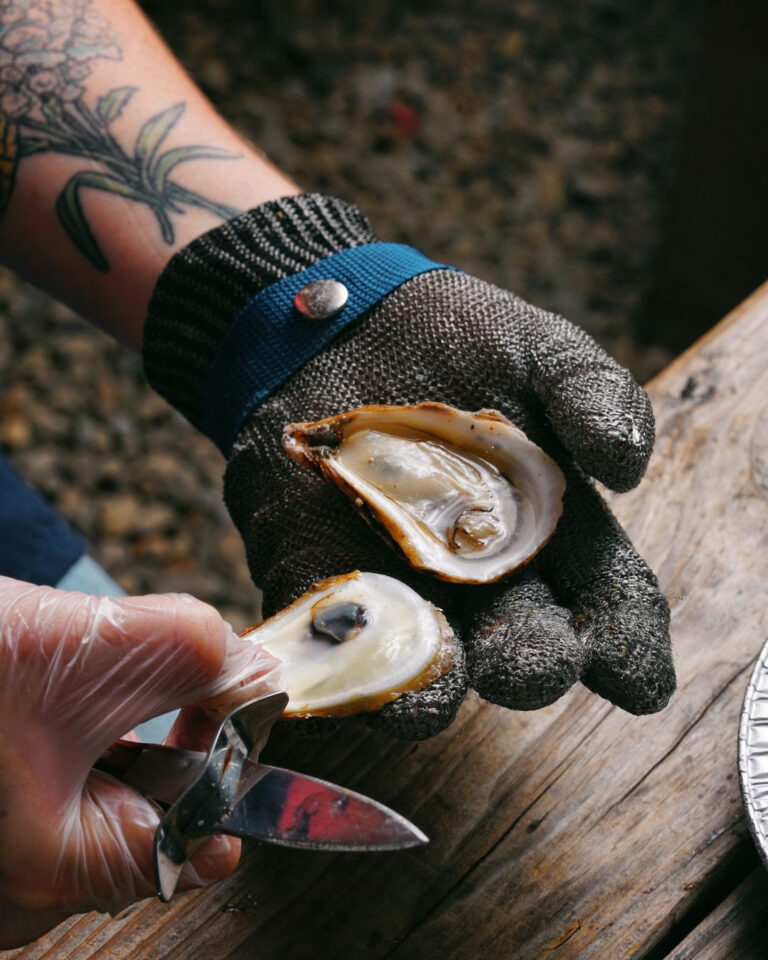This story originally appeared on the Gents Cafe Newsletter. You can subscribe here.
“Mâche!”, the man growled, Gauloises wagging in admonition. Chew before you swallow: my first lesson from the great bear selling oysters outside Paris’ Hôtel Lutetia. He was part of the furniture in Saint-Germain – a huge, looming presence with deft, shovel-hands. We’d often exchange nods, then one day, we started talking. He shared a love for bivalves that’s stayed with me ever since. Nearly 25 years later, another teacher chimes in: “You have to bite into them, that’s when the umami flavours develop.”
Meet Dr. Andy Woolmer, the marine biologist treating oysters like fine wine at the Atlantic edge of west Wales. “This place gives them very distinct qualities,” he says of his Angle Bay Oyster Farm (@pembrokeshireoysters). “Freshwater flows down from the Preseli mountains through salt marshes and seagrass beds to create a unique ‘merroir’.”
Translation: they soak up their surroundings. Everything here is grown with the lightest of touches and a focus on restorative aquaculture, resulting in a Class A shellfish denomination; plus, a two-star accolade from the judges at the Great Taste Awards 2022.
‘Fresh, briny, seaside loveliness,’ was their comment of the rock oysters we’re about to sample. “They’re a pure product, so you can eat them straight off the beach,” says Woolmer, plucking two dozen from their trestles.
On the menu are ‘Mew Stones’, which reach market size within 2 years and pack a citrus-ozone punch. A word to the wise: always use a proper knife to shuck oysters – preferably one with protective bolsters.
Grab a towel; look for the rearmost hinge, and dig in. A subtle crack releases aromas of cucumber and ocean. Breathe them in.
“Now, loosen the oyster in its shell,” suggests Andy. “But don’t pour out its natural liquor.” A squeeze of lemon is all you need. “Eating them raw is a challenge for some,” he admits. But gastronomically, there’s no simpler way.
Gently tip your oyster back – pause – and chew. “Let it roll around your tongue,” instructs Woolmer. Initial sweetness evolves into a complex, mineral finish. Juicy, nuanced, clean. Characteristics Andy’s molluscs make for themselves: “Each oyster filters up to 50 gallons of seawater a day,” he explains. “They benefit their entire their ecosystem, because they leave it in a better condition.”
The final advice belongs to my friend on the Boulevard Raspail: “Ça mange bien avec le Beaujolais!” So, we enjoy these natural delicacies with a 100% Gamay red.
Stuff to savour, not slip down and rush.
Never miss a story – subscribe now to the Gents Cafe Newsletter, a bite-sized read about men’s lifestyle to enjoy over a coffee or a nice cocktail.

